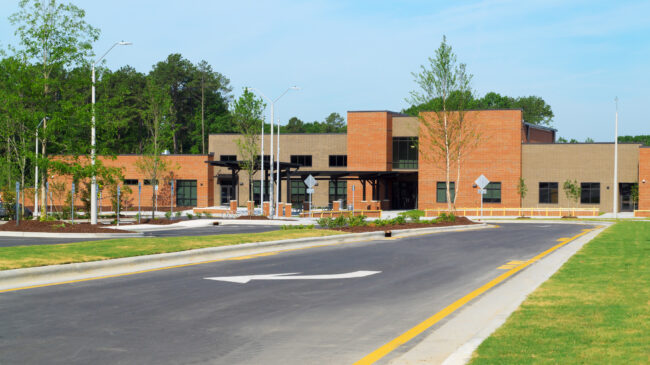In a recent tweet, journalist Nikole Hannah-Jones, creator of the 1619 Project, recycled a common refrain against school-choice programs, noting that “they funnel public dollars into privately run institutions.” Similar talking points are being used in Michigan, Texas, and other states to block policies that give families access to their students’ education dollars and more opportunities for their kids.
This argument is misguided and ignores the fact that public education wouldn’t exist without the private sector. The reality is that much of the $751.7 billion spent annually on K–12 education is used to purchase non-public goods and services.
The wheels of commerce are spinning well before the morning bell rings, with public schools spending over $27 billion annually on transportation services. Manufacturers such as Blue Bird — a publicly traded company that recorded $1.019 billion of sales in 2019 — supply the nation’s 480,000 yellow buses, and about one-third of school districts outsource bus services to private contractors, saving public schools millions of dollars each year.
Without these companies, millions of students would be stuck at home, but that’s only the start. School districts also partner with private entities to build the schools, playgrounds, and athletics facilities they rely on each day.
Nationwide, spending on capital consumes roughly 10 percent of all K–12 education dollars each year, totaling $76.3 billion in 2019 alone. Districts finance much of this spending by issuing municipal bonds, which require private-sector assistance from investment banks, attorneys, and ratings agencies and are purchased by investors such as money managers and insurance companies.
For their part, public-school advocates — including teachers’ unions and other school-choice opponents — almost always support bond referenda, despite the cadre of private actors that profit from them.
Once bonds are approved, school districts hire architecture, engineering, and construction companies to do the work. For example, construction giant Balfour Beatty contracts with districts across the country from Texas to California and has completed over $500 million in projects for the public schools in Wake County, N.C., alone.
Inside classrooms, a similar story unfolds. While nearly half of all education dollars are spent on employee salaries, benefit expenditures for things such as pensions and health insurance account for 21 percent of spending. This includes teacher retirement contributions that are made each year to massive pension funds that invest in equities, real estate, and other financial vehicles that help fund managers diversify risk and hit performance targets. Teachers have a vested interest in U.S. economic growth and benefit from the success of corporate giants such as ExxonMobil, Amazon, and Berkshire Hathaway.
Schools are also increasingly reliant on technology companies to supply computers, tablets, and software solutions that support instruction, and it’s estimated that $26 billion to $41 billion is spent each year on education tech. Similarly, states depend on private firms to administer statewide exams, such as the $388 million in contracts Texas awarded to Pearson and Cambium Assessment.
In some cases, school districts even pay private-school tuition for students they can’t serve. The National Association of State Directors of Special Education says that about 1.5 percent of public-school students with disabilities are placed by their districts into private schools. This practice helps families obtain specialized services and means that public-school districts are already doing exactly what school-choice opponents fight against — sending public dollars to private schools. The only difference is that district bureaucrats, not parents, are the ones calling the shots.
Of course, not all these examples of private-sector partnerships are wise investments or the best use of scarce resources. After all, K–12 transportation is in desperate need of reform, and construction projects can be wasteful. The real issue that opponents such as Hannah-Jones have with school choice isn’t with public dollars going to the private sector, but with competition for students and their per-pupil funding. The public-school monopoly gets weaker when parents can access their education dollars and use them for the private services that they choose, and that’s a good thing.
A version of this column previously appeared in National Review.

